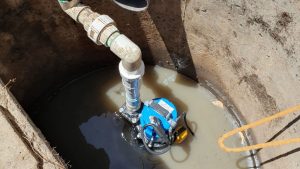What Happens During a Plumbing Service?
When was the last time you had a plumbing service at home? Many people only contact a plumber when an emergency strikes — a burst pipe, a leaky faucet, or a blocked afdre. However, a professional plumbing inspection goes far beyond quick fixes. It’s a comprehensive check-up designed to keep your plumbing system efficient, safe, and long-lasting.
Let’s walk through what happens during a plumbing service, why it’s essential, and how regular maintenance visits can help you avoid major issues down the road.
Initial Assessment: What Happens During a Plumbing Service First Step
Every quality plumbing service begins with a quick conversation and inspection. The professional plumber starts by understanding your concerns — maybe it’s slow drains, low pressure, or unusual noises in the pipes.
This stage helps the plumber establish priorities and set realistic expectations. They’ll also perform a visual inspection in areas such as bathrooms, kitchens, and basements to spot visible issues. With this information, they can offer an accurate cost estimate before proceeding with detailed work.
Detailed Plumbing System Inspection
After the initial review, the plumber conducts a thorough system inspection to identify hidden or potential problems. This is one of the most valuable parts of any plumbing maintenance visit.
Here’s what usually takes place:
- Leak Detection: Specialized tools locate hidden leaks within walls or floors.
- Water Pressure Testing: Ensures balanced water flow throughout your property.
- Drain Assessment: Detects buildup or clogs before they escalate.
- Fixture Check: Evaluates the condition of faucets, showers, and toilets.
- Pipe Inspection: Identifies corrosion, rust, or weakened pipe sections.
- This detailed assessment allows plumbers to spot plumbing issues early, saving you from costly repairs later.
Problem Diagnosis and Identification

Once the inspection is complete, the plumber moves on to diagnosing the root causes of any issues. A dripping faucet, for example, could be more than a simple leak — it might point to water pressure imbalance or faulty seals.
Accurate diagnosis ensures proper solutions instead of temporary patches. At this stage, experienced plumbers also provide preventive plumbing advice so you can minimize future risks and keep your system running smoothly.
Repairs, Replacements, and Adjustments

Next comes the repair phase, where the plumber fixes the identified problems. Depending on the issue, this could include:
- Repairing or sealing leaking joints and pipes
- Replacing old or damaged washers, faucets, or valves
- Cleaning and clearing clogged drains
- Adjusting regulators for balanced water pressureInstalling or upgrading fixtures for improved efficiency
- If the system requires more extensive work, such as pipe replacement or fixture upgrades, the plumber will explain the options clearly and make sure everything aligns with your existing setup.
Final Checks and Clean-Up
After completing all necessary repairs, a reputable plumbing company doesn’t just stop there. They carry out a final system check to make sure everything works properly.
This includes testing water flow, checking for any remaining leaks, and ensuring fixtures operate smoothly. A good plumber also cleans up the workspace afterward — leaving your home as tidy as before, if not cleaner.
These final checks ensure quality, safety, and peace of mind for homeowners.
Preventive Maintenance Tips and Professional Guidance
A huge part of professional plumbing maintenance is prevention. Instead of waiting for an emergency, expert plumbers offer simple yet valuable maintenance tips like:
- Don’t pour grease or oil down the drain.
- Schedule routine plumbing maintenance at least once a year.
- Use strainers to catch debris and avoid clogs.
- Keep an eye on water pressure changes as early warning signs.
They may also recommend an annual plumbing check to ensure the household plumbing system remains in top condition all year long.
Transparent Pricing and Cost Estimates
Once the work is complete, your plumber will provide a detailed breakdown of the plumbing service cost. Transparent pricing means no hidden charges or surprise add-ons — just clear information about what you’re paying for.
If additional repairs or future upgrades are needed, you’ll get honest recommendations so you can decide what suits your home and budget best. This open communication builds trust and long-term client relationships.
The Importance of Regular Plumbing Services

Many homeowners underestimate the value of regular plumbing inspections. Even minor issues like slow drains or small leaks can cause serious water damage if ignored.
Routine maintenance visits offer major benefits, including:
- Extending the lifespan of your plumbing system
- Enhancing water efficiency and reducing utility costs
- Detecting and fixing problems before they worsen
- Maintaining hygiene and safety in your home
- Increasing your property’s overall value
- Simply put, preventive care is always cheaper and safer than emergency repairs.
Conclusion:
Protect Your Home with Regular Plumbing Services
A plumbing service is more than a repair session — it’s a complete inspection that keeps your home safe and efficient. From initial assessment to repairs, cleaning, and maintenance guidance, every step helps protect your home’s most essential system.
So, next time you book a professional plumbing inspection, you’ll know exactly what to expect — expert service, honest advice, and long-term results.Choose a reliable plumbing company that values skill, transparency, and customer care. Remember, a bit of preventive attention today can save you from big plumbing problems tomorrow.




